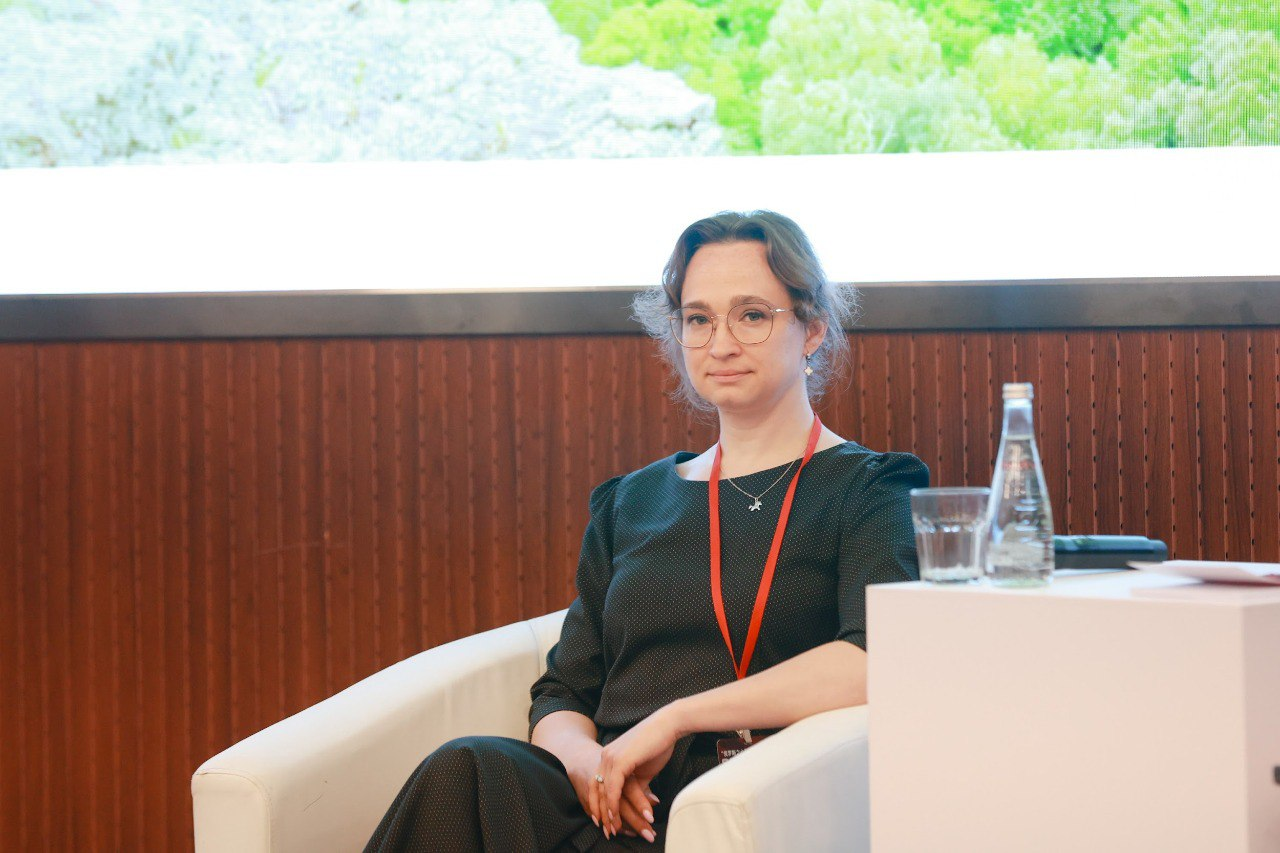
Last week in Beijing, in connection with the celebration of the 75th anniversary of the establishment of Russian-Chinese diplomatic relations, within the framework of the activities of the “Russian NGO Working Group on BRICS and G20 Issues” an event was held aimed at strengthening scientific and cultural cooperation between the two countries.
During the event, the Reserve Embassy Foundation organized a scientific and practical session dedicated to cooperation between Russia and China in protected areas. At the session “Conserving nature, uniting peoples! Cooperation between Russia and China in preserving natural heritage” discussion was held on issues of joint work between Russia and China in the field of biodiversity conservation, eco-tourism, as well as current methods of environmental education in protected areas of the two countries.

This Environmental Session was attended by an employee of the Institute, Ph.D. Yachmennikova Anna, where she spoke about scientific cooperation between the two countries in the field of conservation of the Amur tiger. She presented the results of seven years of joint research work of the Institute of Ecology and Evolution of the Russian Academy of Sciences with Chinese colleagues - the Institute of Natural Resources and Ecology of the Academy of Sciences of Heilongjiang Province. According to her, the partnership was required as part of the implementation of the Institute’s program to return orphaned tiger cubs raised by specialists from the Institute of Ecology and Evolution of the Russian Academy of Sciences to the wild using a methodology developed for these purposes in 2012-2014. After being released into the wild, it became necessary to monitor tigers that had crossed into Chinese territory, and cooperation was established with the Institute of Natural Resources and Ecology of the Academy of Sciences of Heilongjiang Province. Subsequently, scientists made cross-expeditions to protected areas of the two countries.

Russian scientists, according to Anna Yachmennikova, shared with their Chinese colleagues their skills in mapping and assessing the state of tiger habitats, methods of working with satellite images, modeling the territory with neural networks, as well as methods for collecting data on the number of animals (the tiger's food supply) based on their tracks. This information and GIS modeling were used to calculate the ecological corridors along which animals can move from one large preserved forest area to another.
“These corridors are now mathematically designed to be where they should be. But many of them are interrupted by roads built by humans, and because of this, animals cannot cross them and continue using their own habitats. This is called habitat fragmentation. And now it is very important to properly restore this network of green corridors, then this will allow communication between different parts of natural areas and allow animals to walk from one area to another. The areas that we calculated do not all coincide with the territories of the reserves that currently exist. We need to try, if possible, to create more reserves in those key areas that are characteristic of this ecoregion,” notes Anna Yachmennikova.

The report also included abstracts reflecting the prospects for cooperation between the Institute of Ecology and Evolution of the Russian Academy of Sciences and the North-Eastern University of Forestry, within the framework of research projects planned for implementation by the joint international laboratory created in March 2024 to study the state of the Amur tiger population and its restoration within historical area. Thus, the Institute of Ecology and Evolution of the Russian Academy of Sciences has planned additional directions in the study of various aspects of the biology of the tiger and the Far Eastern leopard at the international level. In particular, work will be carried out to assess the well-being of the territory in the north of China in terms of pathogens dangerous to large cats and to assess the genetic state of the populations of both tigers and leopards, because due to inbreeding, accumulating genetic errors may have fatal consequences for the litters. “Chinese colleagues turned to us for our experience in preserving the tiger population. After all, the tiger is a symbol of China, one of the sacred animals of this country. And of course, he should live and should not be in danger,” said Anna Yachmennikova.

The report also covered issues of current research and the need for scientific justification when making decisions at the interstate level; the need to find and implement ways to harmonious coexistence of humans and wild animals; the need to work with people and environmental education.
Photo by: Yana Nochuikina
Related materials:
Interaffairs.ru: Migratory birds, tigers and ecotourism: The Conservation Embassy Foundation held an expert session in China
Conservation Embassy: Migratory birds, tigers and ecotourism: The Conservation Embassy Foundation held an expert session in China
